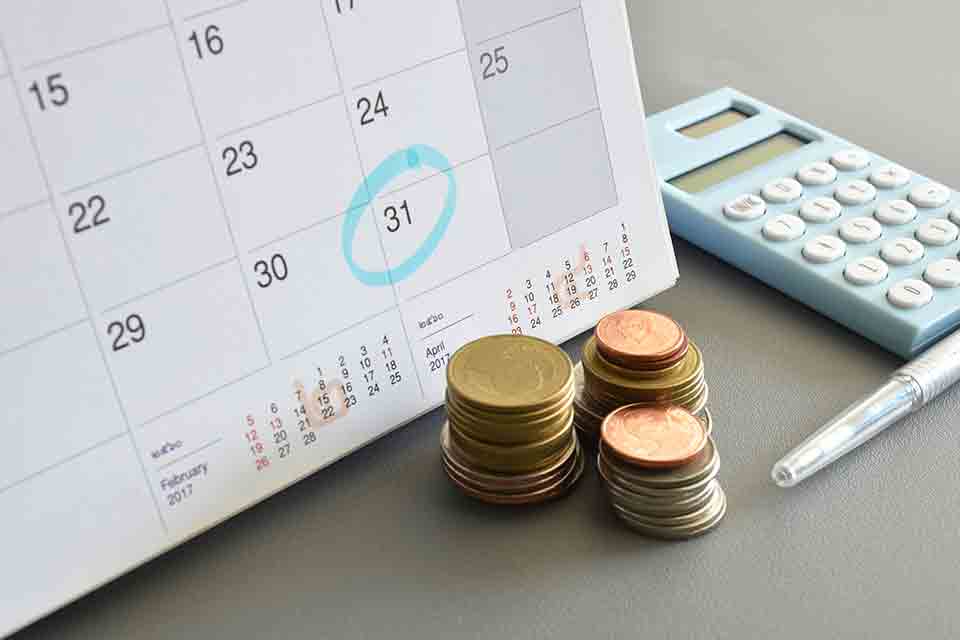Income Tax Challan 280
The process for payment of income tax has been greatly simplified over the years. However, there is still considerable confusion among the Indian income taxpayers on how to pay their income taxes. The complicated jargon which surrounds income tax payment makes the problem worse, and it is difficult for a taxpayer to understand his/her tax liability and how to make his/her payments properly and on time. Considerable time and money are spent by each taxpayer in his/her efforts to navigate the Indian income tax system, including the advance tax payment system. The income tax challan ITNS 280 is one such part of the income tax payment process which needs to be clarified for the benefit of the taxpayer.
What is the ITNS 280?
An individual taxpayer can pay his/her income tax in physical form through selected branches of various banks or in digital form through the internet. The income tax department has made several forms available, such as the ITNS 280, ITNS 281, and ITNS 282, which are to be filled while paying tax. Each of these forms has a different purpose, and the relevant form must be selected by the taxpayer. For example, if TDS or tax deducted at source needs to be filed by an employer, then the employer must file ITNS 281 along with the tax payment. Similarly, if wealth tax, gift tax, expenditure tax, etc. need to be paid by the taxpayer, then the taxpayer must file ITNS 282 along with the tax payment.
The ITNS 280 is a form that needs to be filed with the income tax department if an individual taxpayer is making an advance tax payment by paying an advance tax, self-assessment tax, surcharge, tax on distributed profits, tax on regular assessment, or tax on distributed income. The taxpayer can opt to pay this tax offline through cash or cheque or demand draft, and such payment needs to be made at any branch of a bank that has been authorized to collect income tax payment. Otherwise, the taxpayer also has the option to make this advance tax payment online through direct bank transfer. The ITNS 280 needs to be filed by the taxpayer while paying their income tax, irrespective of whether the income tax filing is being made physically or online.
When does the ITNS 280 need to be filed?
The ITNS 280 challan needs to be filed by the taxpayer along with any payment of tax on regular assessment, self-assessment tax, advance tax, surcharge, tax on distributed profits, or tax on distributed income. If the taxpayer is eligible to file any of the forms of taxes mentioned above, then he/she should download the ITNS 280 challan and appropriately fill the form and file it with the tax department. These forms of taxes need to be filed by an individual taxpayer in the following circumstances:
Advance Tax
The advance tax needs to be paid by any taxpayer who has or is expected to have an income tax liability, which is more than Rs. 10, 000 in a financial year. The advance tax payment has been included in our income tax system so that regular income tax payments are made by taxpayers that provide the income tax department with revenue distributed throughout the financial year rather than having to wait till the end of the financial year to receive tax payments in a single payment. Hence, this tax is called “advance tax” or “pay as you earn tax” since these payments are made as installments to the income tax departments during the year when the income is received by the taxpayer rather than at the end of the year after the income has occurred.
The advance tax is a tax that must be paid by taxpayers like salaried employees, self-employed individuals, service professionals, or businesspeople, and so on. This advance tax has to be paid before such taxpayers file their yearly income tax returns at the end of the financial year. It should be understood by all taxpayers that an income tax return cannot be filed by a taxpayer until and unless all income tax has been paid in full by him/her. Once the income tax for the financial year has been filed by the taxpayer, then he/she can claim returns from the income tax department in the form of deductions, exemptions, expenses, etc.
For individuals whose sole earning comes from their salary, the advance tax may not be needed to be paid since their employer pays the tax deducted at source on their behalf at the time of paying their salaries through Form 16. Since the tax-deducted source usually covers the total income tax liability of the salaried individual, then no further advance tax needs to be paid by a salaried individual. However, it should be kept in mind that if the salaried individual has other sources of income such as rent from a property or capital gains, then they may be liable to pay advance tax. Senior citizens who do not have any business income have been made exempt from the requirement of paying any advance tax.
The advance tax payment needs to occur in accordance with a fixed schedule which has been stipulated by the income tax department, which is: 15% of the advance tax to be paid before 15th June; 45% of the advance tax to be paid before 15th September; 75% of the advance tax to be paid before 15th December; 100% of the advance tax to be paid before 15th March.
For those individuals who intend to file their income tax returns under the presumptive scheme of taxation under Section 44AD and Section 44 ADA, the entire advance tax liability of 100% can be paid in a single installment before March 15th.
Self-Assessment Tax
If a taxpayer has filed his/her advance tax but discovers that his/her entire income tax liability has not been covered by the payment, then he/she must file a self-assessment tax at the end of the year along with tax challan ITNS 280. No specific date has been stipulated for the payment of self-assessment tax.
Tax on Regular Assessment
An income tax officer may check your accounts and may issue a notice of demand stating that additional tax needs to be paid by the taxpayer. In such a case, the taxpayer needs to pay the additional tax along with tax challan ITNS 280. This tax is to be paid during the assessment year, which is the year after the financial year for which the taxes are being paid.
Surcharge
If an individual has an income which is greater than Rs. 50 lakhs in a given financial year, then that individual is liable to pay a surcharge on his/her income tax. This surcharge needs to be filed along with tax challan ITNS 280.
Tax on Distributed Profits
Any domestic company which declares a dividend to its shareholders is liable to pay a tax on distributed profits. This tax is to be paid along with the filing of tax challan ITNS 280.
Tax on Distributed Income
Any domestic company or mutual fund which distributes its income to its unitholders are liable to pay a tax on the distributed income. This tax is to be paid along with the filing of tax challan ITNS 280.
How to file the ITNS 280?
To file the ITNS 280 online, the taxpayer needs to visit https:// onlineservices dot tin.egov-nsdl dot com /etaxnew/tdsnontds dot jsp. Once on the website, the taxpayer should select “Challan No. ITNS 280” and proceed to fill in all the requisite details which are required by the form.
It should be kept in mind that if the taxpayer is a company, then the option to be selected in the form is (0020) – Income Tax on Companies, whereas if the taxpayer is any entity other than a company such as a partnership or an individual then the option to be selected is (0021) – Other Than Companies.
The correct Permanent Account Number (PAN) must be given in the form so that the tax is deposited in the correct name.
The assessment year is the year that follows the financial year for which the tax is being paid. For example, if you are paying tax for the financial year 2018-2019, then the assessment year which you must provide in the form is 2019-2020.
After providing all the required details in the form, the taxpayer should click on the “proceed” link. A confirmation page will appear which displays all the information you have provided and should be double-checked for accuracy. If the details provided are correct, then the taxpayer should select the “Submit to Bank” option. Subsequently, the taxpayer shall be asked to log in to his/her net-banking account, and upon successful log-in, the taxpayer shall be asked to enter the amount of tax which they are paying.
On successfully entering and confirming, the tax amount to be paid, the payment will be processed by the bank, and the taxpayer will receive a challan counter-foil which should be saved by the taxpayer for future reference. Once this is done, the taxpayer's income tax payment along with submission of the ITNS 280 challan is completed.
The Final Words
The option to make the advance tax payment online along with the filing of ITNS 280 is a convenient way for a taxpayer to clear his/her tax dues. The taxpayer can also check the status of his/her tax payment online and ensure that the payment reaches the income tax department. Paying taxes online is a safe, secure, and fast method of payment, and the taxpayer does not have to visit the bank for the same anymore.
Helpful Resources: Online Income Tax Calculator
˜Top 5 plans based on annualized premium, for bookings made in the first 6 months of FY 24-25. Policybazaar does not endorse, rate or recommend any particular insurer or insurance product offered by any insurer. This list of plans listed here comprise of insurance products offered by all the insurance partners of Policybazaar. For a complete list of insurers in India refer to the Insurance Regulatory and Development Authority of India website, www.irdai.gov.in
*All savings are provided by the insurer as per the IRDAI approved insurance plan.
^The tax benefits under Section 80C allow a deduction of up to ₹1.5 lakhs from the taxable income per year and 10(10D) tax benefits are for investments made up to ₹2.5 Lakhs/ year for policies bought after 1 Feb 2021. Tax benefits and savings are subject to changes in tax laws.
¶Long-term capital gains (LTCG) tax (12.5%) is exempted on annual premiums up to 2.5 lacs.
++Source - Google Review Rating available on:- http://bit.ly/3J20bXZ


- SIP Calculator
- Income Tax Calculator
- Compound Interest Calculator
- NPS Calculator
- Show More Calculator
Income Tax articles
Explore the popular searches and stay informed
- LIC
- Investment Plan
- Annuity Plan
- Child Plan
- Pension Plan
- ULIP Plan
- Child Investment Plan
- SIP
- SIP Calculator
- SBI SIP
- ULIP Calculator
- Sukanya Samriddhi Yojana
- Best SIP Plans
- Retirement Planning
- SBI SIP Calculator
- HDFC SIP Calculator
- Sukanya Samriddhi Yojana Interest Rate
- NPS Interest Rate
- Deferred Annuity Plans
- SBI Annuity Deposit Scheme Calculator
- Immediate Annuity Plans
- Post Office Child Plan
- Prime Minister Schemes For Boy Child
- Government Schemes for Girl Child
- 50k Pension Per Month
- Atal Pension Yojana Calculator
- Best Pension Plan in India
- 1 Crore Term Insurance
- Best Term Insurance Plan
- Term Insurance for Women
- Term Insurance for NRI
- Term Insurance
- Term Insurance Calculator
- Life Insurance
- Term Insurance with Return of Premium
- Whole Life Insurance
- Term Insurance vs Life Insurance
- What is Term Insurance
- Life Insurance Calculator
- 5 Crore Term Insurance
- 2 Crore Term Insurance
- 50 Lakh Term Insurance
- Term Insurance for Housewife
- Benefits of Term Insurance
- Term Insurance Terminology
- Medical Tests for Term Insurance
- Term Insurance for Self Employed
- Claim Settlement Ratio
- 10 Crore Term Insurance
- Term Insurance for Smokers
- 1.5 Crore Term Insurance
- Zero Cost Term Insurance

















